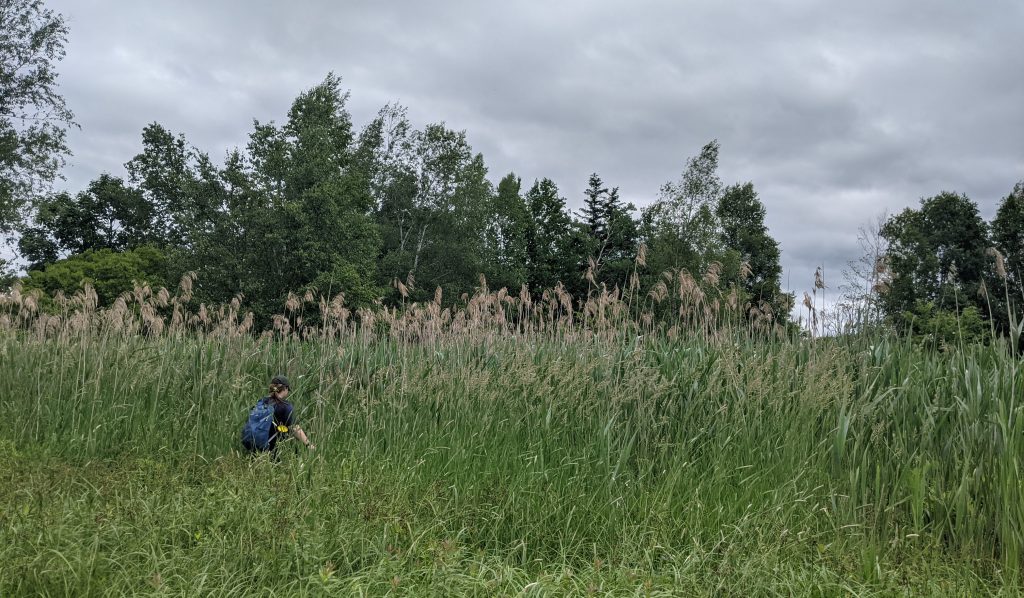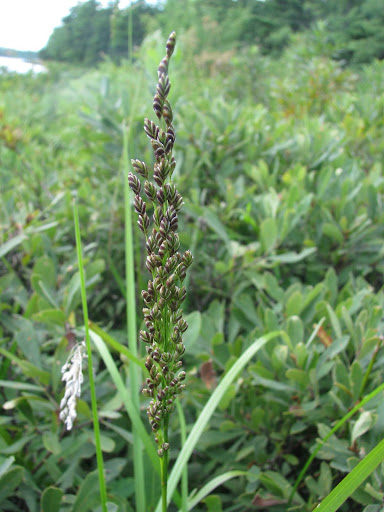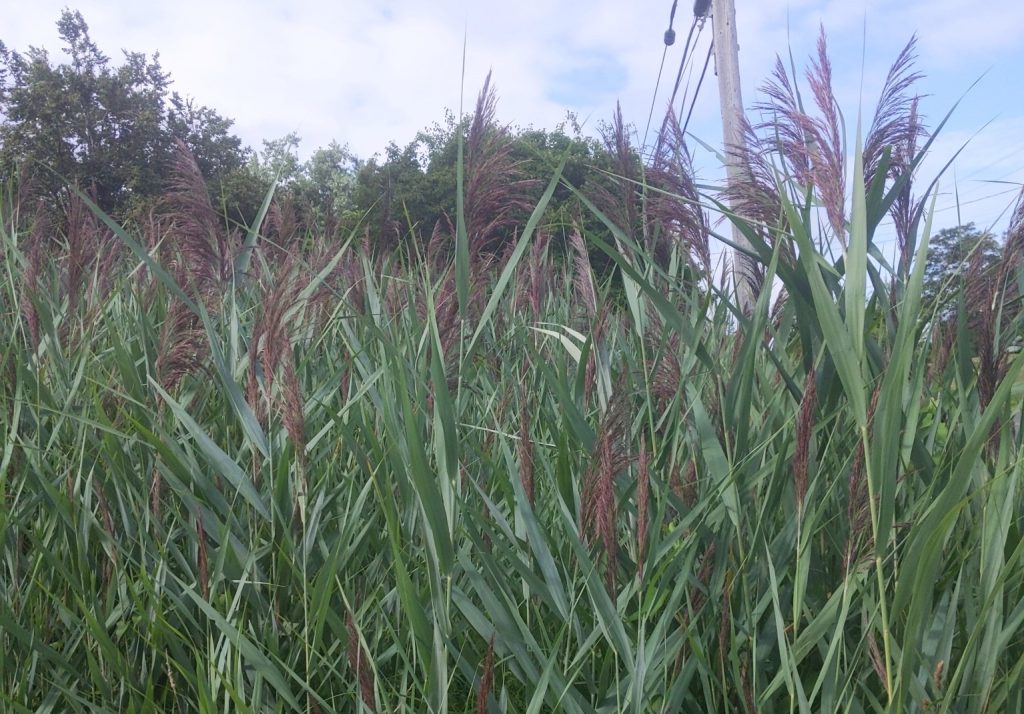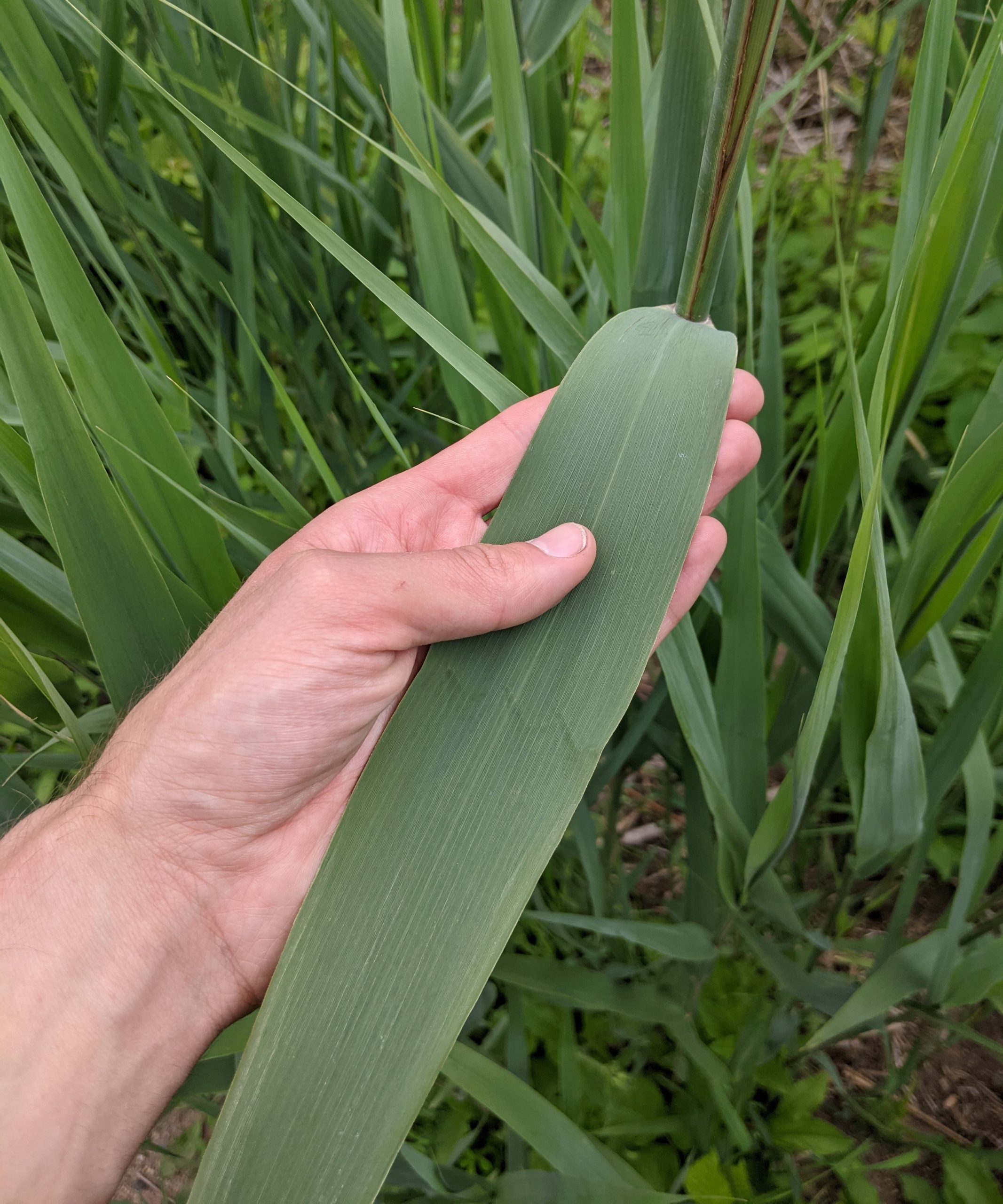Very tall, stout grass, often reaching heights of 3 m or more (exceptionally to 4 m). Stem hollow, up to 1.5 cm thick. Leaves usually bluishgreen, 15-50 cm long, 2 to 4 cm wide. Flower head large and feathery, 15 to 40 cm long, blooming in late July to September, purplish when young and straw-coloured at maturity. Each tiny flower is surrounded by silky hairs, giving the inflorescence its feathery appearance. Looks very similar to our native subspecies (ssp. americanus).
Wet ditches and various freshwater or brackish shores and wetlands. Spreading quickly through its roots (to several meters a year!), it can quickly form large dense stands that exclude native species and can alter the structure and function of native marsh ecosystems.
Probably first introduced accidentally in North America in ships’ ballasts or as a seed contaminant in the late 1700s or early 1800s. Also spread to a limited extent as an ornamental grass. Introduced subspecies has likely been present in Nova Scotia for quite some time, as the earliest specimen collections date back to 1910.

Our native Old Switch Panic Grass (Panicum virgatum var. spissum), Blue-joint Reedgrass (Calamagrostis canadensis) and Blunt Manna-grass (Glyceria obtusa) are delightful, non-invasive grasses.

Very tall, feathery flower head. Check with an expert to distinguish from very similar native subspecies.




This reed and others like it have been used as a premium thatching material for thousands of years.
Promote the use of attractive, native or non-invasive grasses. Encourage government, industry and your fellow citizens to take action to prevent the trade and movement of Common Reed. Do not compost pulled and cut plant parts; instead, dry and burn on site (with permit). If you spot this invasive species, report the location to iNaturalist or directly to the NSISC.